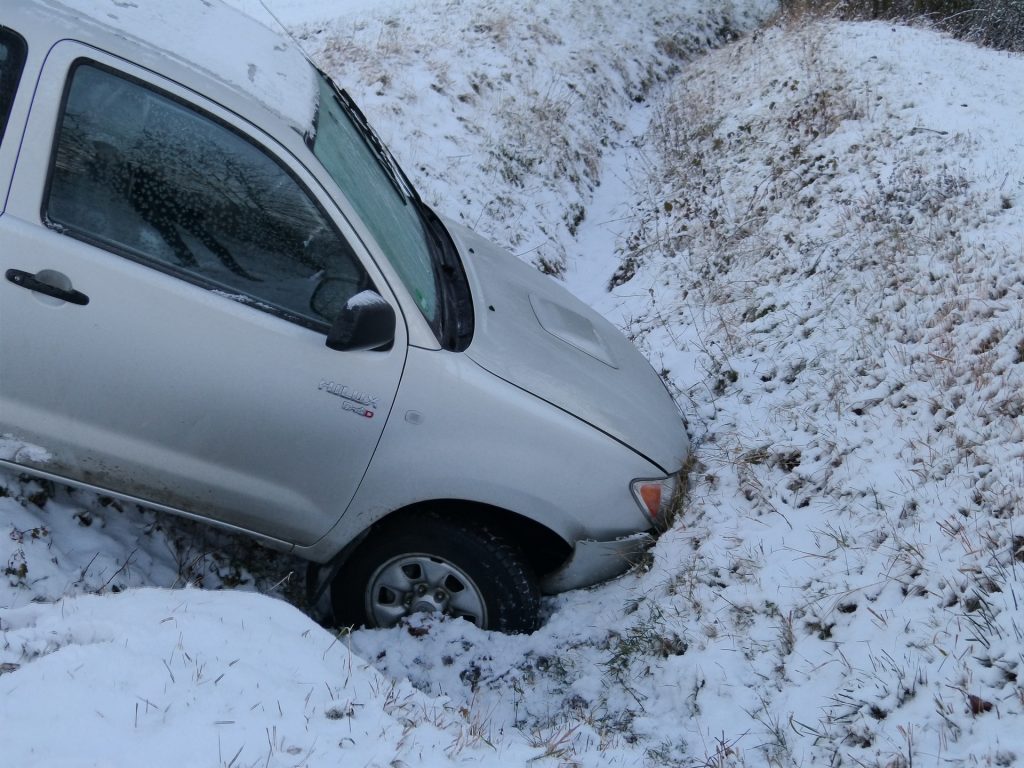The open road beckons, but navigating the world of affordable car insurance can feel like dodging potholes in the dark. Two terms often emerge as confusing headlights: Accident Forgiveness and Clean Driving Records. Both influence your premium, but which one holds the steering wheel when it comes to price hikes? Follow along as CheapInsurance.com explores these nuances, and empowers you to choose the optimal path for your automotive journey.
Key Takeaways:
- Clean driving reigns supreme: A spotless record is your golden ticket to lower premiums. Prioritize safe driving habits and avoid infractions.
- Accident Forgiveness acts as a buffer: For occasional slip-ups, this add-on can shield you from a premium hike on one forgiven accident.
- Weigh the cost-benefit balance: Analyze the extra cost of Accident Forgiveness versus your risk tolerance and driving frequency.
- Long-term goals matter: Building a clean record through responsible driving offers sustainable premium savings.
- Tailor your choice: Consider tiered options and individual factors to make the best decision for your unique driving profile.

Understanding the Basics:
Accident Forgiveness might sound like a dream come true for drivers, but like any insurance add-on, it comes with its own set of complexities. To truly understand its impact on your premium, let’s unpack its benefits, limitations, and even hidden costs you should consider:
Benefits:
- Peace of mind: Accident Forgiveness provides a safety net, especially for new drivers or those prone to occasional mishaps. Knowing that one minor fender bender won’t immediately escalate your rates can offer valuable peace of mind and encourage responsible driving.
- Potential cost savings: While it’s not a guarantee of lower premiums, avoiding a premium hike due to a forgiven accident can save you money in the short term. This can be particularly helpful for drivers who are already paying higher rates due to other factors like age or location.
- Second chance for improvement: Accident Forgiveness can act as a springboard for drivers to improve their driving habits. Knowing they have one “free pass” can motivate them to be more cautious and focus on building a clean driving record in the long run.
Limitations:
- One-time protection: Remember, Accident Forgiveness typically only covers one at-fault accident within a specific timeframe. Subsequent accidents, even if minor, will likely trigger a premium increase.
- Exclusion of certain violations: Not all driving mistakes are equal. Accident Forgiveness often excludes serious violations like DUIs, reckless driving, and speeding tickets. These infractions will still have a significant impact on your rates, regardless of the forgiven accident.
- Hidden costs: While the add-on itself might not be expensive, it can add up over time. Factor in the cost of Accident Forgiveness when comparing car insurance quotes and consider whether these additional dollars are worth the limited protection it offers.
Beyond the obvious:
Now, let’s explore some hidden costs that might not be immediately apparent:
- Potential impact on future auto insurance quotes: Although the forgiven accident doesn’t officially appear on your driving record, some insurance companies might still factor it into their risk assessment when calculating future quotes. This could lead to slightly higher premiums even when switching insurers.
- Overconfidence trap: Accident Forgiveness can inadvertently create a false sense of security, encouraging some drivers to be less cautious. Remember, even forgiven accidents can result in financial burdens like deductibles and repairs, so responsible driving remains paramount.
Ultimately, whether Accident Forgiveness is worth it depends on your individual driving profile and risk tolerance. Carefully weigh the benefits and limitations against your specific needs and budget before making a decision. If you’re unsure, consulting with an insurance agent can provide valuable guidance and personalized insights.
This expanded section provides more detail, explores hidden costs, and encourages critical thinking about the true value of Accident Forgiveness for different driver types. It also emphasizes the importance of responsible driving beyond just avoiding premium increases.

Clean Driving Records Explained: More Than Just Avoiding Accidents.
A clean driving record is like a squeaky-clean windshield, offering unobstructed views of lower premiums. It’s not just about steering clear of accidents; it encompasses avoiding traffic violations, citations, and even suspended licenses. Maintaining this pristine record unlocks car insurance discounts, builds trust with the best car insurers, and translates to more affordable coverage. Remember, even minor infractions can cast a shadow on your record, so responsible driving is key.
How Do Car Insurance Companies Use These Factors to Set Premiums?
Car insurance companies might not wield literal crystal balls, but their actuarial models come pretty close. These sophisticated algorithms are the unsung heroes, meticulously crunching numbers and analyzing various factors to paint a picture of your driving risk – and ultimately, your premium. Let’s dive into the factors that hold the most weight in this risk assessment:
The Holy Grail: Your Driving Record
Your driving record is like a detailed road map to your driving habits, charting your journey through the highways and byways of traffic regulations. It’s the single most influential factor in determining your premium, acting as a powerful testament to your responsibility and skill behind the wheel.
- Accidents: These collisions, big or small, are the red flags on your roadmap, each bump and scrape adding a mark to your risk profile. The severity, frequency, and fault attribution of accidents all play a role in how much your premium jumps.
- Moving Violations: Think of these as tolls you haven’t paid, each speeding ticket, stop sign ignored, or illegal lane change adding a hefty fee to your insurance premium. The type and severity of violation, along with your driving record overall, determine the toll’s size.
- Non-Moving Violations: Don’t be lulled by the “non-moving” label. Parking tickets, expired registrations, and even open container violations may seem like minor blips, but they’re like chipped paint on your insurance picture, hinting at potential carelessness.
Beyond the Record: Additional Risk Factors
While your driving record is the main protagonist, other factors influence the supporting cast of your insurance premium:
- Demographics: Age, gender, location, and marital status all play a role. Statistically, younger drivers, males, and residents of densely populated areas are considered higher risk, leading to higher premiums.
- Vehicle Type: The car you drive matters too. Sports cars and high-performance vehicles scream “risk” to insurers, while sedans and minivans offer a calmer premium landscape.
- Annual Mileage: The more you drive, the higher the chance of an accident, so driving less translates to lower premiums.
Accident Forgiveness: A Temporary Truce in the Risk Game
Think of Accident Forgiveness as a temporary waiver in the risk assessment game. It allows one forgiven accident within a specific time frame without raising your premium, offering a safety net for occasional mishaps. But remember, it’s not a magic eraser. The forgiven accident still stays on your record, potentially impacting future auto quotes with other insurers.
Ultimately, understanding how these factors are weighed and analyzed is crucial for making informed decisions about your car insurance. By cultivating a clean driving record, practicing safe driving habits, and choosing a vehicle and driving frequency that minimizes risk, you can navigate the world of car insurance with confidence, knowing your premium reflects your responsible behavior behind the wheel.
Let’s delve deeper into the specific factors insurers consider while setting premiums, highlighting the influence of demographics, vehicle type, and mileage. It also clarifies the limitations of Accident Forgiveness and emphasizes the importance of proactive risk management for drivers.

The Great Debate:
Accident Forgiveness: A Safety Net for Occasional Mistakes?
Accident Forgiveness acts as a safety net, providing peace of mind for those prone to the occasional fender bender. It can also be a valuable asset for new drivers or those rebuilding their record after a past mistake. However, it’s crucial to remember that it’s not a license to be reckless. The extra cost of the add-on and the potential hit to your overall driving record if you commit multiple infractions should be weighed carefully.
Maintaining a Clean Driving Record: The Long-Term Investment Approach.
Cultivating a clean driving record is a long-term investment that yields continuous dividends. Not only does it keep your premiums lower, but it also opens doors to better coverage options and cheaper auto insurance discounts. Think of it as building a reputation of reliability on the road, making you a more attractive client for insurers. The key lies in practicing defensive driving, staying vigilant, and following traffic regulations.
Weighing the Costs: Can Accident Forgiveness Compensate for a Poor Record?
While Accident Forgiveness can shield you from one mishap, it’s not a magic bullet for a chronically blemished driving record. Multiple accidents and frequent violations will eventually outweigh the benefits of this add-on, leading to skyrocketing premiums. If your driving record needs a makeover, focusing on building a clean slate through safe driving habits is the more cost-effective solution in the long run.
Making Informed Decisions:
Is Accident Forgiveness Worth the Extra Cost? Factors to Consider.
So, should you shell out extra bucks for Accident Forgiveness? It’s a question as personal as choosing your favorite flavor of ice cream, and the answer depends on a swirling mix of factors unique to your driving world. Let’s dive into the decision-making blizzard and examine the pros and cons, helping you determine if this add-on deserves a spot in your insurance portfolio.
For the Cautious Cruiser:
If you’re a driving saint, the idea of paying extra for a “get out of jail free card” might feel like adding sprinkles to plain vanilla. Your spotless record already earns you premium discounts, and the likelihood of needing Accident Forgiveness is as rare as seeing a unicorn on roller skates. In this case, skipping this add-on and pocketing the savings might be the wisest choice.
For the Occasional Stumble:
But life throws curveballs, and even the most cautious drivers can experience an unexpected fender bender. For this crew, Accident Forgiveness acts as a safety net, a financial cushion that prevents a single stumble from turning into a premium avalanche. New drivers, those rebuilding their driving record after a past mistake, and occasional lapse-prone individuals can breathe a sigh of relief knowing that one minor mishap won’t send their rates skyrocketing. Of course, if a driver has more than an accident or two, or collects multiple moving violations, and moves into the world of SR-22 insurance, they risk not being able to qualify for any Accident Forgiveness programs. These drivers should instead focus on repairing their driving records over time.
Weighing the Worth:
Before adding Accident Forgiveness to your insurance shopping cart, consider these factors:
- Cost-benefit analysis: Compare car insurance quotes with and without the add-on. See if the extra cost outweighs the potential premium hike you might face after an unforgiven accident.
- Frequency of mishaps: Be honest. Are you a once-in-a-decade bumbler or a frequent visitor to the “Oops-I-Forgot-to-Brake” club? Tailor your decision to your accident-prone tendencies.
- Long-term investment: If you’re building a clean driving record for the long haul, focusing on safe driving habits might be a more cost-effective strategy than relying on Accident Forgiveness as a crutch.
Remember, the insurance world isn’t always black and white. Some companies offer tiered Accident Forgiveness options, covering more than one accident or extending the forgiveness period. These variations can tilt the cost-benefit equation, making the add-on more appealing for certain drivers.
Ultimately, the decision rests on your unique driving profile and risk tolerance. If peace of mind and protection from a potential premium spike outweigh the extra cost, Accident Forgiveness might be a valuable shield worth wielding. But for cautious cruisers who prioritize long-term savings and building a clean record brick by brick, skipping this add-on might be the smoother (and cheaper) road to take.
This expanded section provides a more nuanced approach to evaluating the worth of Accident Forgiveness. It emphasizes the importance of cost-benefit analysis, considers individual driving frequency and long-term goals, and highlights the existence of tiered options that might make the add-on more appealing for certain drivers.

Strategies for Building and Maintaining a Clean Driving Record:
Building a clean driving record takes dedication and proactive measures. Implement defensive driving techniques, stay focused on the road, avoid distractions like phones, and be mindful of traffic regulations. Additionally, consider enrolling in safe driving courses to refresh your knowledge and earn potential discounts on your insurance. Remember, every safe mile adds another brick to the fortress of your clean record.
When Does One Outweigh the Other? Tailoring Your Coverage to Your Needs.
Choosing between Accident Forgiveness and a clean driving record depends on your unique circumstances. If you’re a high-risk driver with a blemished record, focusing on improving your driving and building a clean slate is the most sustainable solution. For low-risk drivers with occasional lapses in judgment, Accident Forgiveness might provide valuable protection. Ultimately, the key lies in understanding your risk profile and tailoring your coverage to best suit your needs.


